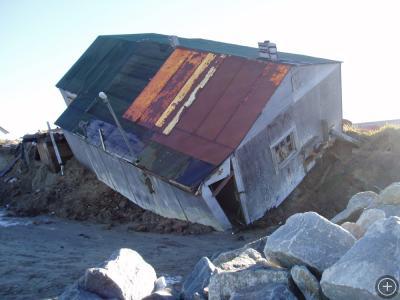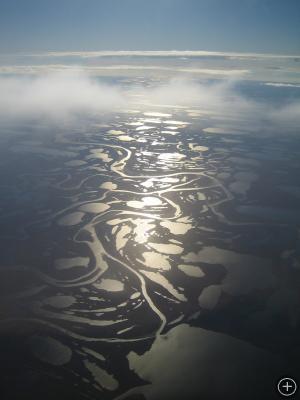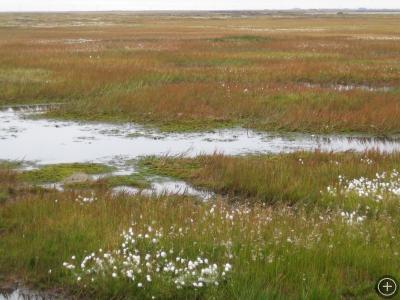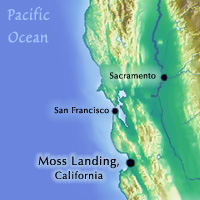Permafrost gone soft
MOSS LANDING, CALIFORNIA– In early July, 2008, I traveled to Saint Petersburg, Russia, to join thousands of other polar scientists for the SCAR (Scientific Committee on Antarctic Research) Open Science Conference. SCAR is an inter-disciplinary committee responsible for initiating, developing and coordinating international scientific research in the Antarctic region and understanding its effect on the greater Earth system. In this and my next several dispatches, I am going to share the latest polar science I learned from SCAR.
Permafrost gone soft
“Not only has climate change begun, but we are seeing a significant impact,” said Wayne Pollard from McGill University in Montreal, Canada in his plenary talk on “The effects of climate change on polar landscapes.” His talked focused on the Arctic permafrost, which refers to ground that has remained frozen for a minimum of 2 years and as many as several thousands of years. More than 25% of the Earth’s land surface is considered permafrost, comprising 50% of Canada, 80% of Alaska, and 60% of Russia. Pollard reported that permafrost regions are one of the most sensitive and severely affected by climate change. He further stated, “40-60% of the permafrost could disappear in the next 100 years.”
The melting permafrost causes a host of problems for local Arctic populations and the environment. As a solid landmass, permafrost provides stability to Arctic slopes. In contrast, “when the permafrost melts, it turns into a slurry of liquefied mud, referred to as a thermokarst. The result is thaw lakes and tundra ponds and frozen peat turning into vast wetlands,” says Pollard. Thawing permafrost combined with reduced sea-ice and increased storm activity will collectively increase the erosion of Arctic coastlines, directly impacting coastal communities, culturally important sites and industrial facilities.

In Shishmaref, Alaska, melting permafrost has contributed to major erosion, forcing residents to consider moving the entire village to a new location.
Most alarming is the global effects of melting permafrost. Scientists have reported that Arctic soils hold 30 percent or more of all the carbon stored in soils worldwide. When it is frozen, the permafrost acts as a sink for carbon dioxide and methane, two of the major greenhouse gases. Pollard explained that now as it melts, it will become a source. Since the conference, even more alarming results have been reported. Edward A.G. Schuur of the University of Florida and an international group of coauthors has shown that the melting permafrost is a far larger source for greenhouse gases than previously believed and will indeed further contribute to global warming. See the September, 2008 press release at
http://www.aibs.org/bioscience-press-releases/080828_thawing_permafrost_likely_to_boost_global_warming.html

 No comments
No comments 









